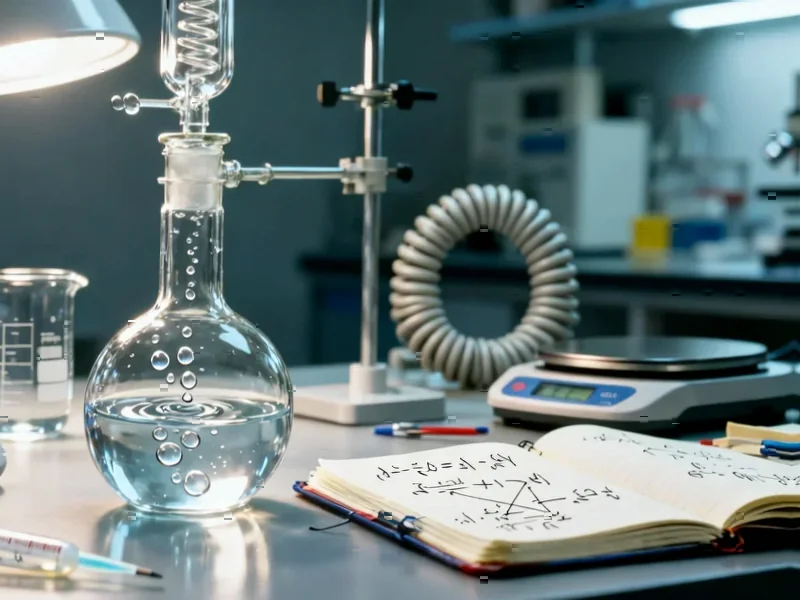According to Phys.org, Northeastern University researchers Neel Joshi and Rong Chang have engineered E. coli bacteria to form reversible, programmable structures using disordered proteins that act like microscopic hairs. In research published in the Proceedings of the National Academy of Sciences, the team modified E. coli to use these proteins as Velcro-like filaments that bind cells together, enabling them to create specific shapes that can be reorganized and reversed by changing environmental conditions. The system represents a significant advancement in controlling direct cell-to-cell contact without relying on external scaffolding materials, with Chang noting these results “have never been reported before.” This breakthrough opens new possibilities for engineering living materials that can be grown and harvested like biological structures.
The Engineering Challenge of Direct Cellular Control
What makes this research particularly significant is the move beyond scaffold-based approaches that have dominated synthetic biology. Previous work in engineered living materials typically relied on external matrices or polymers—similar to how plant cells use cellulose—to provide structural integrity. The Northeastern team’s approach bypasses this entirely by enabling direct, programmable contact between cells themselves. This is biologically much more challenging because it requires cells to coordinate their positioning, division, and boundaries without external guidance structures. The technical achievement here lies in creating a system where cells can dynamically reorganize based on environmental cues, essentially creating living materials that can adapt and respond to their surroundings in real-time.
The Power of Disordered Proteins in Synthetic Biology
The choice of disordered proteins represents a sophisticated understanding of protein engineering principles. Unlike traditional ordered proteins that maintain specific three-dimensional structures—like antibodies with their characteristic Y-shape—disordered proteins lack fixed conformations. This flexibility is precisely what makes them ideal for creating dynamic, reversible cellular interactions. The research team’s use of the CsgF protein as an anchor point demonstrates clever repurposing of existing biological components. As detailed in their published research, these proteins function like underwater kelp forests, with their constant motion and flexibility enabling the Velcro-like binding mechanism. This approach contrasts with more rigid protein engineering strategies that typically create permanent, static structures.
From Laboratory Curiosity to Real-World Materials
The potential applications extend far beyond academic interest. The ability to incorporate functional disordered proteins—such as anti-freezing proteins mentioned by Chang—suggests pathways toward creating materials that can withstand extreme environments. Imagine medical implants that can self-assemble within the body and adapt to changing physiological conditions, or construction materials that can be grown rather than manufactured, reducing energy consumption and waste. The reversible nature of these structures opens possibilities for temporary scaffolds in tissue engineering or responsive materials that change properties based on temperature, pH, or other environmental factors. This represents a fundamental shift toward truly programmable matter that bridges the gap between biological systems and engineered materials.
Scaling and Control Challenges Ahead
While the research demonstrates impressive control at the laboratory scale, significant challenges remain for practical implementation. Scaling these systems to create macroscopic materials will require solving complex problems in nutrient distribution, waste removal, and structural integrity across larger scales. The team will need to develop more sophisticated control systems to prevent unwanted mutations or evolutionary drift in the engineered bacteria. There are also important safety considerations for deploying engineered microorganisms in real-world applications, particularly in medical or environmental contexts. The transition from controlled laboratory environments to practical applications will require robust containment strategies and fail-safe mechanisms to ensure these programmable materials don’t pose ecological or health risks.
The Broader Impact on Materials Science
This research represents a paradigm shift in how we think about manufacturing and materials. Traditional manufacturing is subtractive or formative—we cut, mold, or assemble materials into desired shapes. This approach offers an additive, biological alternative where materials grow into their final forms. The implications for sustainability are profound: imagine growing construction materials with minimal energy input or creating medical devices that integrate seamlessly with biological tissues. The platform nature of this technology, as emphasized by both researchers, means other scientists can build upon this foundation to incorporate different protein functions and create materials with diverse properties. We’re witnessing the early stages of what could become a completely new materials economy based on programmed biological growth rather than traditional manufacturing processes.




